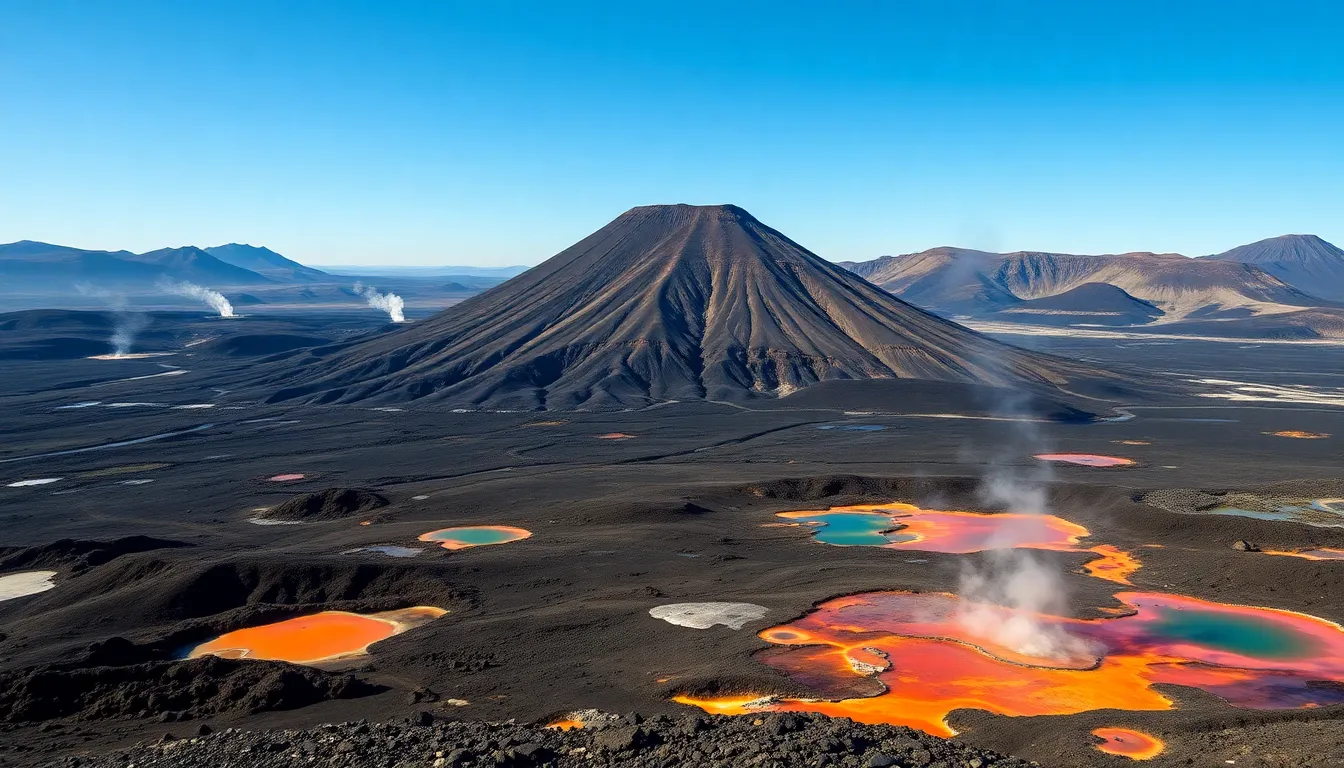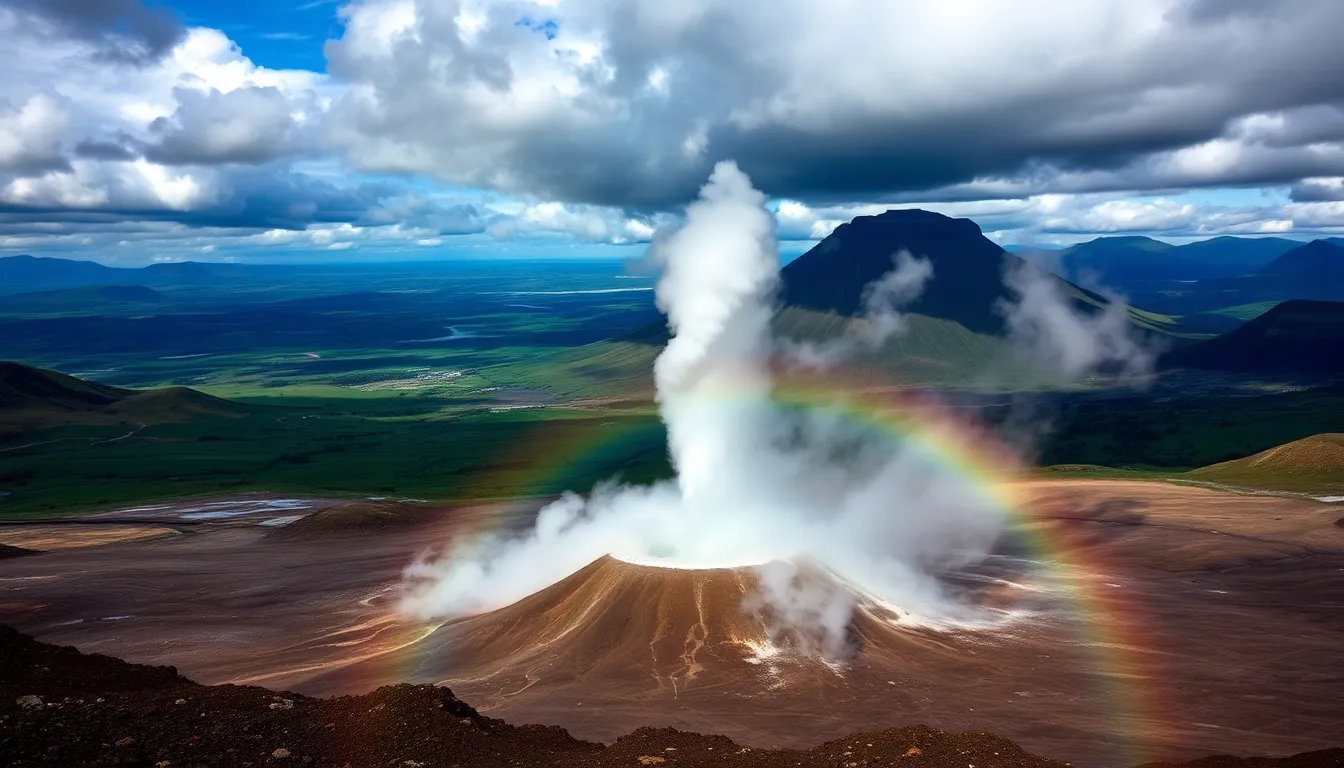When it comes to the Earth’s fiery secrets, volcanic hot spots are the ultimate VIP lounges of geology. Picture this: a plume of molten rock rising from deep within the Earth, creating islands and mountains that seem to pop up out of nowhere. These regions are nature’s way of reminding us that even the planet has a flair for the dramatic.
Table of Contents
ToggleOverview of Volcanic Hot Spot Regions
Volcanic hot spot regions form in areas where heat from the Earth’s mantle generates magma. These regions differ from tectonic plate boundaries, as they can occur within a plate rather than at its edges. The Pacific Plate, for example, hosts hotspots like the one beneath Hawaii. This hotspot has produced a chain of volcanic islands over millions of years as the plate moves over the stationary plume of magma.
Another example is the Yellowstone hot spot located in the western United States. It has created significant geothermal features, including geysers and hot springs. The active volcanic landscape in Yellowstone reflects the ongoing geological processes beneath the Earth’s surface.
Hot spot activity can lead to diverse geological formations. Shield volcanoes, created by the gradual accumulation of basalt lava, exemplify this process. Such volcanoes, like Mauna Loa in Hawaii, exhibit gentle slopes due to the fluid nature of the lava. Conversely, stratovolcanoes, formed from alternating layers of lava and ash, present steep profiles. Mount St. Helens in Washington showcases the dramatic effects of stratovolcano eruptions.
Geological research highlights the relationship between hot spots and mantle plumes. These plumes represent columns of hot material rising from deep within the mantle and play a crucial role in volcanic activity. Studies reveal that hot spots may also influence regional tectonics over extensive timeframes.
Regions with volcanic hot spots provide insight into Earth’s inner workings. Understanding these areas enables researchers to assess volcanic risks and predict eruptions. Evidence suggests that monitoring changes in seismic activity can offer important data for hazard assessment in these dynamic landscapes.
Characteristics of Volcanic Hot Spot Regions

Characteristics of volcanic hot spot regions reveal unique geological processes. These areas form due to the interaction of mantle plumes with tectonic plates, resulting in distinctive features.
Plume Composition
Plume composition significantly impacts volcanic activity. Molten material, primarily composed of basaltic magma, originates from the Earth’s mantle. This magma contains various elements, including silicon, oxygen, iron, magnesium, and calcium. These components contribute to the fluidity and temperature of the magma, facilitating its rise towards the surface. Trace elements found within the plumes can influence the resulting volcanic rock’s mineralogy. Variations in plume composition lead to diverse volcanic eruptions. Some eruptions are explosive, while others primarily produce lava flows.
Geological Features
Geological features define volcanic hot spot regions’ landscapes. Shield volcanoes, formed by low-viscosity lava, create broad, gently sloping hills. These formations contrast with stratovolcanoes, characterized by steeper profiles and explosive eruptions. Hot spots may also produce calderas, large depressions formed after massive eruptions. Additional features such as geysers and hot springs emerge from geothermal activity linked to these regions. The varied geological diversity illustrates the complex interactions between molten rock and surface elements. Studying these features enhances understanding of volcanic processes and risks associated with eruptions.
Notable Volcanic Hot Spot Regions
Volcanic hot spot regions showcase unique geological activity and can lead to impressive landforms. Three notable examples include the Hawaiian hot spot, Yellowstone hot spot, and Icelandic hot spot.
Hawaiian Hot Spot
The Hawaiian hot spot lies beneath the Pacific Plate, generating a chain of volcanic islands. Molten rock from the mantle pushes up through the plate, forming shield volcanoes. Kilauea and Mauna Loa are among the most active volcanoes in this region. Eruptions often feature non-explosive lava flows, allowing for the gradual building of large islands. Continuous eruptions shape the landscape, demonstrating the hot spot’s influence on geologic processes.
Yellowstone Hot Spot
Located beneath the Yellowstone National Park, the Yellowstone hot spot is renowned for its geothermal features. Geysers, such as Old Faithful, illustrate the heat generated by magma beneath the surface. Massive calderas form after explosive eruptions. The last major eruption occurred approximately 640,000 years ago, emphasizing the potential for future volcanic activity. Monitoring this hot spot provides essential data for understanding volcanic risks in the region.
Icelandic Hot Spot
The Icelandic hot spot sits on the Mid-Atlantic Ridge, where tectonic plates diverge. This unique positioning results in frequent volcanic activity and the formation of rift valleys. Eyjafjallajökull and Katla exemplify the area’s active volcanoes. Eruptions often produce significant ash clouds, impacting air travel worldwide. Geothermal energy, sourced from this hot spot, plays a vital role in Iceland’s energy supply and showcases the region’s dynamic geological processes.
Effects on Ecosystems and Human Life
Volcanic hot spot regions significantly influence ecosystems and human life, creating unique challenges and opportunities.
Biodiversity Impact
Biodiversity often flourishes in volcanic hot spot areas. New landforms created by eruptions provide habitats for various plant and animal species. Endemic species may evolve due to isolated environments, contributing to unique ecosystems. The Hawaiian Islands serve as a prime example, with endemic species such as the Hawaiian honeycreeper that adapted specifically to the local environment. However, volcanic activity can disrupt existing ecosystems, leading to habitat loss and changing species dynamics.
Natural Hazards
Natural hazards accompany volcanic hot spots, posing risks to nearby human populations. Eruptions can generate explosive hazards like pyroclastic flows and ash clouds, threatening health and safety. For instance, the 2010 eruption of Eyjafjallajökull in Iceland disrupted air travel across Europe. Additionally, lava flows can destroy infrastructure and agricultural land, impacting communities. Regular seismic monitoring allows for better hazard assessments and preparedness, reducing human vulnerability in these dynamic regions.
Conclusion
Volcanic hot spot regions play a vital role in shaping the Earth’s landscape and ecosystems. Their unique geological features not only provide insights into the planet’s dynamic processes but also highlight the complex relationship between volcanic activity and biodiversity. While these areas offer opportunities for research and energy production, they also present significant risks to nearby populations. Understanding the behavior of hot spots and implementing effective monitoring strategies is essential for mitigating volcanic hazards. As scientists continue to study these fascinating regions, they unlock the mysteries of our planet’s geology and enhance preparedness for future volcanic events.







